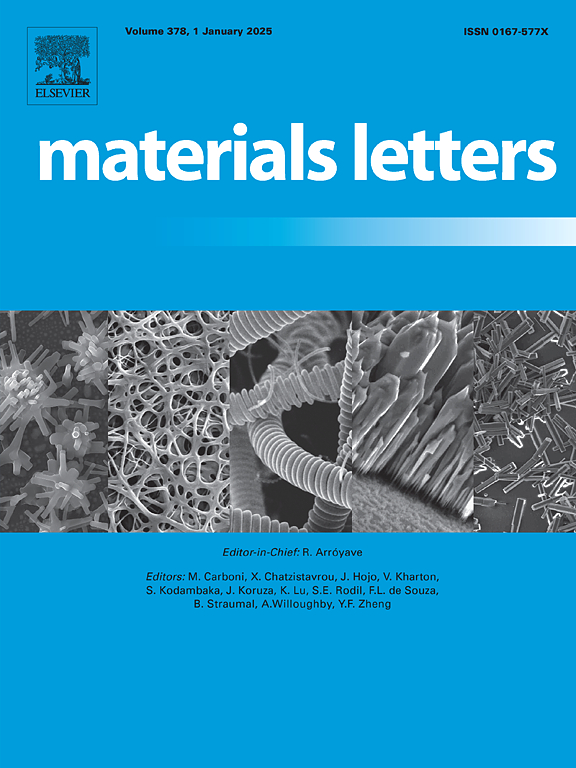闪光诱导化学反应:在 <10 秒内将硫化物转化为氧化物并使其致密化
IF 2.7
4区 材料科学
Q3 MATERIALS SCIENCE, MULTIDISCIPLINARY
引用次数: 0
摘要
本研究表明,施加电场可提高化学反应的速率,并显著降低反应温度。焙烧是金属硫化物在空气中加热转化为金属氧化物的冶金过程。硫化锌(ZnS)的传统焙烧需要高温(800 °C),且过程缓慢。现场诱导焙烧和致密化在炉温低至 650 °C、10 秒钟内同时发生。闪蒸第三阶段的间断实验表明,立方硫化锌首先在 ∼ 844 °C(出现在 1020 °C以上)转变为六方硫化锌,然后才转变为氧化锌。该研究介绍了一种利用电场加速化学反应的新方法,既快速又节能。本文章由计算机程序翻译,如有差异,请以英文原文为准。
Flash-induced chemical reaction: Conversion of a sulphide into oxide and its densification in <10 s
The present work shows that the rate of a chemical reaction can be enhanced by application of electric field and the reaction temperature can be lowered significantly. Roasting is a metallurgical process where metal sulphides transform into metal oxide when heated in presence of air. Conventional roasting of zinc sulphide (ZnS) requires high temperatures (>800 °C) and is a sluggish process. Field-induced roasting and densification occurred together at a furnace temperature as low as 650 °C in <10 s. Interrupted experiments in stage III of flash showed that cubic ZnS first transformed to hexagonal ZnS at ∼ 844 °C (which appears above 1020 °C) before transforming to ZnO. The hexagonal phase was retained at room temperature only if the flash was turned off in <5 s. This study introduces a new method for speeding up chemical reactions using electric fields, which is both fast and energy efficient.
求助全文
通过发布文献求助,成功后即可免费获取论文全文。
去求助
来源期刊

Materials Letters
工程技术-材料科学:综合
CiteScore
5.60
自引率
3.30%
发文量
1948
审稿时长
50 days
期刊介绍:
Materials Letters has an open access mirror journal Materials Letters: X, sharing the same aims and scope, editorial team, submission system and rigorous peer review.
Materials Letters is dedicated to publishing novel, cutting edge reports of broad interest to the materials community. The journal provides a forum for materials scientists and engineers, physicists, and chemists to rapidly communicate on the most important topics in the field of materials.
Contributions include, but are not limited to, a variety of topics such as:
• Materials - Metals and alloys, amorphous solids, ceramics, composites, polymers, semiconductors
• Applications - Structural, opto-electronic, magnetic, medical, MEMS, sensors, smart
• Characterization - Analytical, microscopy, scanning probes, nanoscopic, optical, electrical, magnetic, acoustic, spectroscopic, diffraction
• Novel Materials - Micro and nanostructures (nanowires, nanotubes, nanoparticles), nanocomposites, thin films, superlattices, quantum dots.
• Processing - Crystal growth, thin film processing, sol-gel processing, mechanical processing, assembly, nanocrystalline processing.
• Properties - Mechanical, magnetic, optical, electrical, ferroelectric, thermal, interfacial, transport, thermodynamic
• Synthesis - Quenching, solid state, solidification, solution synthesis, vapor deposition, high pressure, explosive
 求助内容:
求助内容: 应助结果提醒方式:
应助结果提醒方式:


